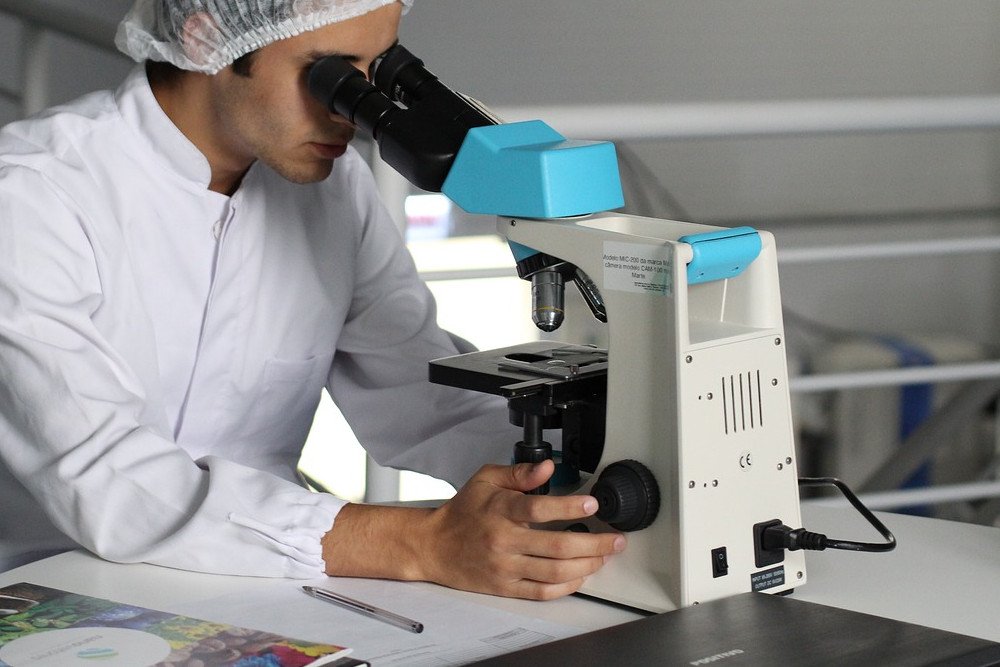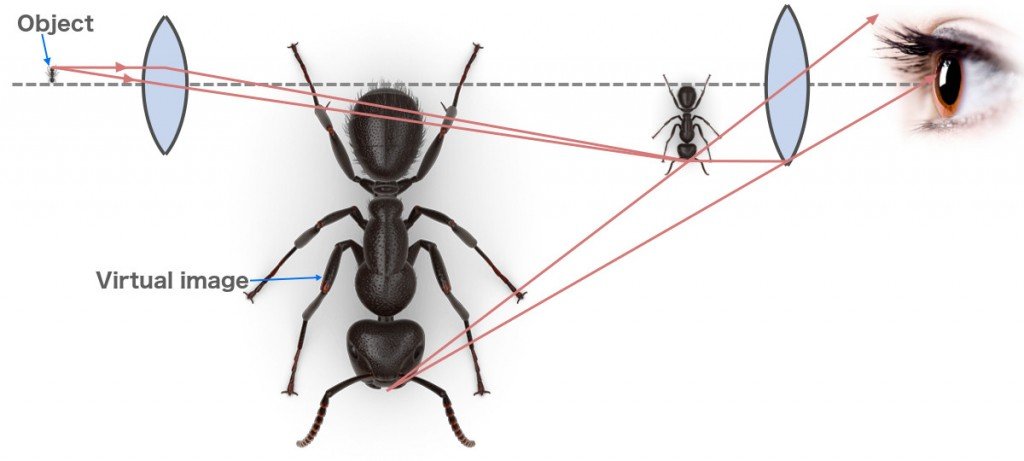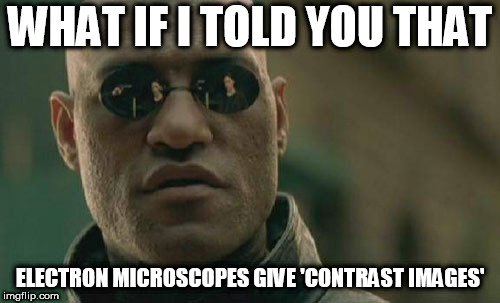Table of Contents (click to expand)
Microscopes are machines that help us see things that are too small to see with our eyes. There are different types of microscopes, and some of them can produce colored images. Electron microscopes produce black and white images because they use electrons to image a specimen.
You probably observed biological specimens through a microscope in your science lab back in high school. And if you are, or have been, a biology major, then it could safely be assumed that you’ve spent a considerable part of your academic life around microscopes.
You may already know that there are a few different kinds of microscopes, including simple microscopes, compound microscopes, stereo microscopes, electron microscopes and others. All of these are used in different settings: some of them are used in biology classes in high school, while other, more advanced microscopes (like electron microscope) are used in research laboratories where scientists tinker with and examine really, really small stuff, like the eye of a housefly.
If you’ve never seen what kinds of images microscopes produce, here are a few examples:

It’s generally believed that images produced by microscopes lack color, i.e., they are black and white. And this is true, at least to some extent.
So, do all microscopes produce black-and-white images? If yes, what’s the reason behind that?
Microscopes Can Produce Colored Images
As mentioned earlier, microscopes come in different types and sizes, and some of them do produce colored images. Take light microscopes, for example.

The magnified image that a light microscope produces contains color. In fact, if you use any ordinary optical microscope that magnifies up to 500x levels, then you’ll most likely see colors in the magnified image.
However, when you go beyond a certain level of magnification, colors start disappearing from (the magnified) images. This is because in order to see something under a microscope, the object must have a very thin cross-section. In addition to that, it also needs to be thin enough for light to pass through it (generally).
That being said, when you take a specimen so small and thin, there’s not really that much material that could add color to the light. Think of it this way: when you look at a drop of water, it appears perfectly colorless, but when you look at an ocean – which is basically a collection of trillions of colorless drops of water – it appears to be a magnificent blue.

Similarly, when you look at a carrot with the naked eye, it appears orange or reddish, but when you take a small enough slice of the same carrot and observe it under a microscope, the orange color virtually disappears.
This is why you don’t see color in optical microscopes, even when you put a colored specimen under the lens.
Electron microscopes are a different ball game altogether. They produce grayscale images of the specimen, i.e., the magnified images are black and white. Why is that?
Also Read: Which Is Better: Optical Microscope Or Electron Microscope?
Microscopy: Photons Vs Electrons
When we look at specimens through ordinary optical microscopes, we’re able to see their minute details because light bounces off their surface and reaches our eyes. More specifically, it’s the photons present in the light that reach our eyes and help us see the magnified image of a specimen.

However, when you have to observe really small stuff, like the insides of an insect’s eye, then an optical microscope won’t do you much good. In that case, you need an electron microscope.
An electron microscope, as the name suggests, works with the help of fast-moving electrons, unlike optical microscopes (which use photons). We have discussed the working principle of electron microscopes in detail in this article.
For now, let’s just say that electron microscopes use an electron beam that bounces off the specimen. The ‘pattern’ of the bouncing electrons is then used to render a 3D image of what the magnified version of the specimen looks like.
Here’s an image produced by an electron microscope:

Also Read: What Is An Electron Microscope? How Does It Work?
Why Do Electron Microscopes Produce Black And White Images?
The reason is pretty basic: color is a property of light (i.e., photons), and since electron microscopes use an electron beam to image a specimen, there’s no color information recorded. The area where electrons pass through the specimen appears white, and the area where electrons don’t pass through appears black.
So, what you’re looking at when you see the image produced by an electron microscope is basically contrast, which is why the image is black and white.

You could always add ‘false’ colors to the image produced by an electron microscope, but those colors that are ‘added’ to the image are only used to make the image look more ‘visually appealing’, and have no relationship at all to the real color of the specimen in question.
Furthermore, scientists have designed a new electron microscope that can, in fact, produce colored images of a specimen. However, the images it produces contain only two colors – red and green. With a few tweaks, researchers hope to add more colors to the mix, which will finally (maybe) allow them to produce flashy, vibrant images of a housefly’s eye!
How well do you understand the article above!

References (click to expand)
- A technique for generating colour scanning electron .... Rochester Institute of Technology
- Light Microscope (Theory) : Cell biology Virtual Lab I. Amrita Vishwa Vidyapeetham
- See the first color images produced by an electron microscope. Science
- Basic Photoshop for Electron Microscopy. Northwestern University
- electron microscopy - www.nanolab.ucla.edu:80
